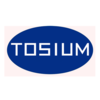鈦合金薄壁構件激光沖擊殘余應力穩定性研究鈦合金薄壁構件激光沖擊殘余應力穩定性研究Study on Stability of Residual Stress Induced by Laser Shock Processing inTitanium Alloy Thin-Components 針對航空發動機壓氣機薄葉片激光沖擊后殘余壓應力的嚴重松弛問題,對TC11鈦合金薄壁試件激光沖擊后進行軸向拉-拉疲勞試驗和真空保溫處理,通過X射線衍射測試獲得疲勞載荷和熱應力載荷作用下的應力松弛規律,并分析松弛機理。試驗結果表明:疲勞載荷(σmax=500 MPa,R=0.1)作用下表面殘余壓應力松弛了53%,前5次循環占了95%,且表面松弛程度和嚴重松弛深度都隨疲勞載荷增大而增大,其松弛機理是局部材料發生塑性變形而引起應力場重分布。在200℃、300℃、400℃下恒定保溫120 min后,表面殘余壓應力分別松弛了3%、29%和48%,而在200℃/400℃和300℃/400℃交替保溫120 min后分別松弛了18%和58%,松弛均發生在前60min內,且嚴重松弛深度隨溫度呈現相同變化規律,其松弛機理是熱應力激活位錯、晶界等進行運動和消亡而導致塑性回復。由于松弛機理不同,疲勞載荷與熱應力載荷復合作用下應力松弛呈現出疊加效應。 Because the compressor thin-blades of aero-engine often fractured in service, laser shock processingwas suggested to be applied as a surface strengthening technology. Aim at the problem of compressive residualstress relaxation in laser-peened compressor thin-blades, TC11 titanium alloy thin-components were treated bylaser shock processing and then conducted in axial tensile-tensile fatigue test and thermal insulation in vacuum.X-ray diffraction tests were carried out to obtain the relaxation rules of residual stress under fatigue loading andthermal stress loading. In addition, the relaxation mechanisms of residual stress were indicated. Experimentresults demonstrate that surface compressive residual stress relaxes by 53%, and 95% of stress relaxation occursin the previous 5 fatigue cycles under the fatigue loading (σmax=500 MPa, R=0.1). The surface relaxation degree and severely-relaxed depth increase with fatigue loading, and the relaxation mechanism is that plastic deformationof local area material results in residual stress redistribution. Surface compressive residual stress relaxes by 3%,29% and 48% respectively after thermal insulation for 120 min under the constant temperature of 200 ℃, 300 ℃and 400 ℃. Surface compressive residual stress relaxes by 18% and 58% respectively after thermal insulation for120 min under the altering temperature of 200 ℃+400 ℃ and 300 ℃+400 ℃. The relaxation all occurs in theprevious 60 min. There is a similar trend with temperature in the aspect of severely-relaxed depth. The relaxationmechanism under thermal stress loading is that dislocations and grain-boundaries are activated to move andannihilated, and then plastic deformation recovery occurs. Due to the distinction of relaxation mechanisms, thereis an obvious superimposed effect under the combined action of fatigue loading and thermal stress loading. 全文下載:https://pan.baidu.com/s/1dE7hKM9 上一篇: 汽車部件用耐熱鎂合金的開發
|







